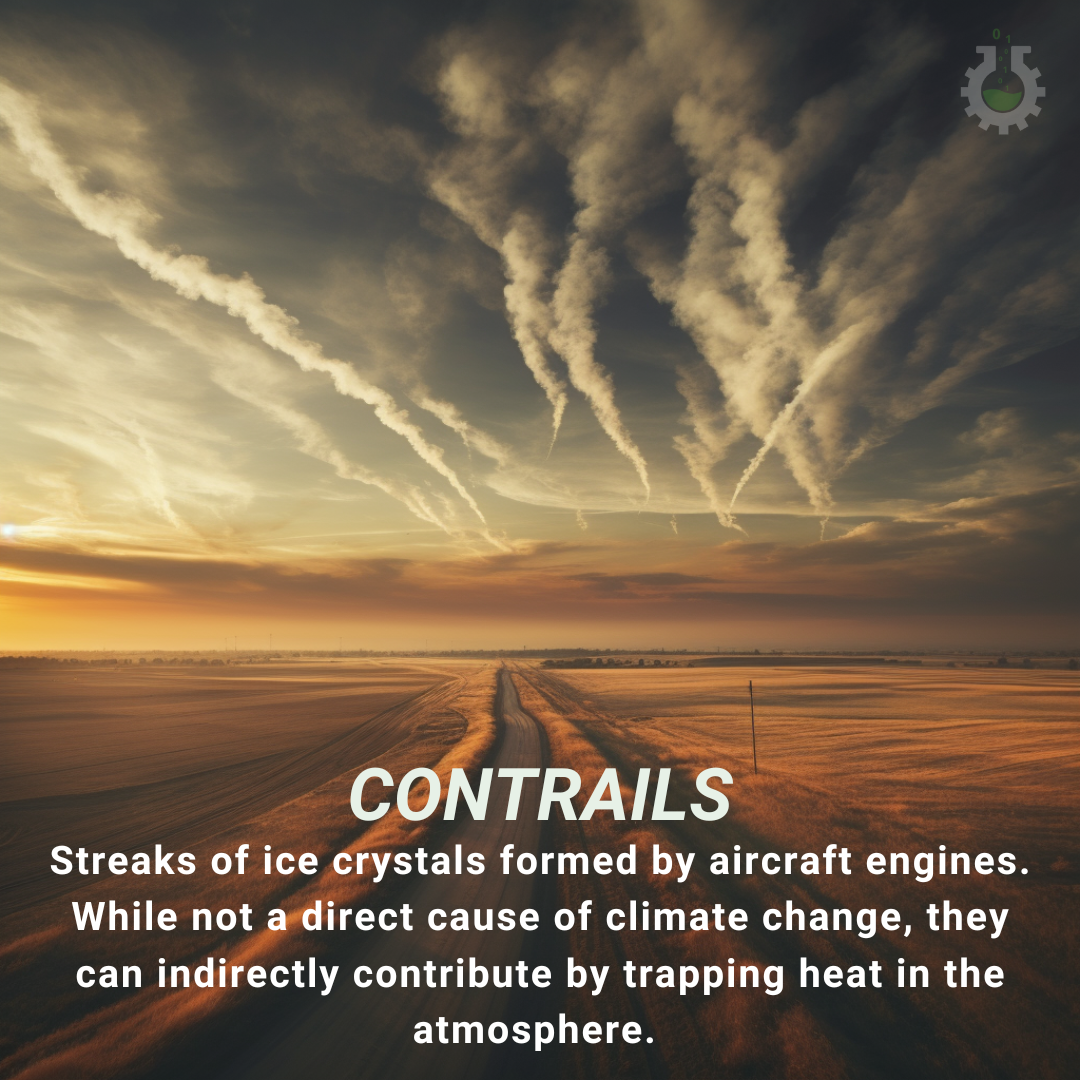December 4, 2023
Climate Change Poster Collection of the Day – Contrails
Book a Demo
Today’s Climate Change Poster Collection highlights Contrails, also known as condensation trails, are a common sight in our skies, often mistaken for natural clouds. These trails are produced by the exhaust from jet engines when water vapor and soot particles freeze into ice crystals, creating streaks that can stretch for several kilometers. Under certain conditions, these trails may persist and even spread into contrail cirrus clouds, contributing to the formation of artificial cloud cover.
The creation of contrails is a complex process that depends on the right blend of atmospheric conditions. It requires water vapor, cool air, and tiny particles upon which the water vapor can condense. The water vapor is a by-product of jet fuel combustion and it condenses on soot particles also emitted from the plane’s engines. However, contrails are not a guaranteed by-product of every flight. It’s estimated that less than 20% of planes create contrails, typically at high altitudes where the air is cold enough for water to freeze. Depending on the humidity of the air, contrails can either vanish quickly or linger, further influencing their environmental impact.
Contrails’ environmental effect is a topic of increasing concern. Some research suggests that contrails might have a larger impact on global warming than the carbon emissions from burning jet fuel. This is because they disrupt the balance between incoming solar radiation and the Earth’s heat emission, trapping heat in the atmosphere.
Thankfully, there are potential solutions to prevent contrails formation. These include modifying flight paths, using more efficient combustion technology in aircraft engines, and improving weather forecasts to help avoid flying in highly humid air. One company, Satavia, founded by Adam Durant, has stepped up to the challenge, creating a weather prediction model that forecasts where and when contrails are likely to form. This technology aids in modifying flight plans to minimize their formation.
Satavia’s technology was first used in October 2021 on a commercial flight operated by Etihad. Since then, Satavia and Etihad have completed numerous flights, and the company is set to begin a trial with KLM. The potential benefits of this approach are substantial. A study from Imperial College London suggests that diverting just 1.7% of flights could reduce contrail-related climate damage by up to 59%. Furthermore, the cost of addressing contrail issues is estimated to be less than $1 billion per year, a figure far outweighed by the potential benefits. As we continue to grapple with the challenges of climate change, contrails and their mitigation represent an important part of the conversation.
Discover an inspiring collection of climate change poster.



